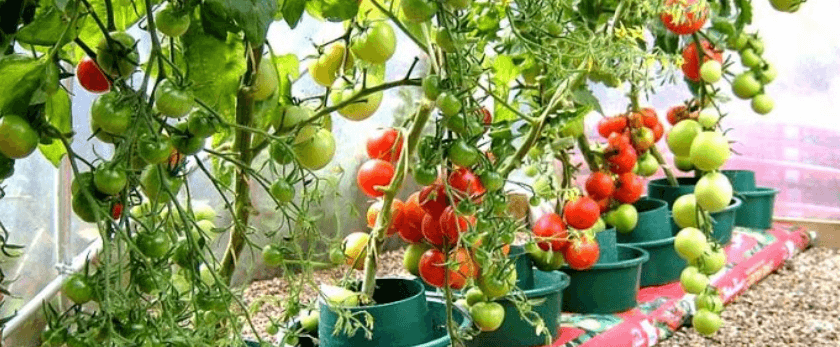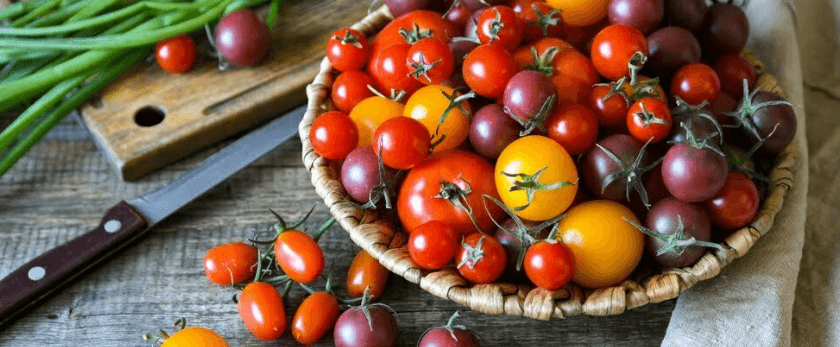Tomatoes are a staple in many households, whether they're used in salads, sauces, or eaten on their own. But did you know that growing your own tomatoes can not only save you money, but also help reduce your carbon footprint? By growing your own tomatoes, you can ensure that they are grown organically and without harmful pesticides. Plus, it's a fun and rewarding activity that can be done in your own backyard or even in a small balcony garden. In this article, we'll discuss the basics of how to grow tomatoes sustainably, from caring for your plants to common problems and solutions.
How to Care for Tomatoes
Watering
Tomatoes need consistent watering to thrive, but it's important to not overwater them. The best way to water tomatoes is to give them a deep watering once or twice a week, rather than shallow watering every day. This will encourage the roots to grow deeper and make the plant more resilient to drought. It's also important to water at the base of the plant, rather than on the leaves, to prevent diseases.
Light
Tomatoes need at least 6-8 hours of sunlight per day to grow and produce fruit. If you're growing tomatoes indoors, make sure to place them near a sunny window or use grow lights. If you're growing them outdoors, choose a spot that receives full sun throughout the day. If you live in a hot climate, consider providing some shade during the hottest part of the day to prevent sunscald on the fruits.
Soil
Tomatoes prefer well-draining, nutrient-rich soil. You can either buy a pre-made potting mix or make your own by mixing equal parts of compost, peat moss, and vermiculite or perlite. Avoid using soil from your garden, as it may contain pests or diseases that can harm your plants. If you're growing tomatoes in containers, make sure they have drainage holes to prevent waterlogging.
Fertilizer
Tomatoes are heavy feeders and require regular fertilization to produce healthy fruits. You can use organic fertilizers such as compost, manure, or fish emulsion. Apply the fertilizer once a month, following the instructions on the package. Avoid using chemical fertilizers, as they can harm beneficial insects and pollute the environment.
Pruning
Pruning is an important step in growing tomatoes, as it helps improve air circulation and prevent diseases. It also encourages the plant to put its energy into producing fruits rather than growing more foliage. You can prune off any suckers (small shoots that grow between the main stem and branches) and any yellow or diseased leaves. Make sure to use clean pruning shears to prevent the spread of diseases.

What is the Best Time to Grow Tomatoes?
Tomatoes are warm-weather plants and should be planted after the last frost in your area. This is usually in late spring or early summer. If you're starting your tomatoes from seeds, you can start them indoors 6-8 weeks before the last frost and transplant them outside once the weather warms up. If you live in a colder climate, you can also grow tomatoes in a greenhouse or use season extenders such as row covers or cloches to protect them from frost.
Common Problems with Tomatoes and Solutions
Pests
Tomatoes can be susceptible to pests such as aphids, whiteflies, and tomato hornworms. To prevent these pests, make sure to keep your garden clean and free of debris, as they can harbor pests. You can also use natural pest control methods such as introducing beneficial insects like ladybugs or using neem oil. If the infestation is severe, you can use organic pesticides as a last resort.
Diseases
Tomatoes can also be affected by diseases such as blight, wilt, and mosaic virus. To prevent these diseases, make sure to rotate your crops every year, as planting tomatoes in the same spot can increase the risk of diseases. You can also use disease-resistant varieties and avoid overhead watering, as it can spread diseases. If your plants do get infected, remove and dispose of the affected parts immediately to prevent the spread.
Blossom End Rot
Blossom end rot is a common problem in tomatoes, where the bottom of the fruit turns black and becomes sunken. This is caused by a calcium deficiency in the plant, which can be caused by inconsistent watering or nutrient imbalances in the soil. To prevent this, make sure to water your plants consistently and add calcium-rich amendments such as crushed eggshells or bone meal to the soil.
Conclusion
Growing your own tomatoes can not only provide you with fresh, delicious produce, but also help reduce your carbon footprint and promote sustainable living. By following these tips on caring for your plants, choosing the right time to grow, and addressing common problems, you can have a successful and eco-friendly tomato garden. So why not give it a try and enjoy the fruits of your labor while also contributing to a greener future? Happy gardening!










